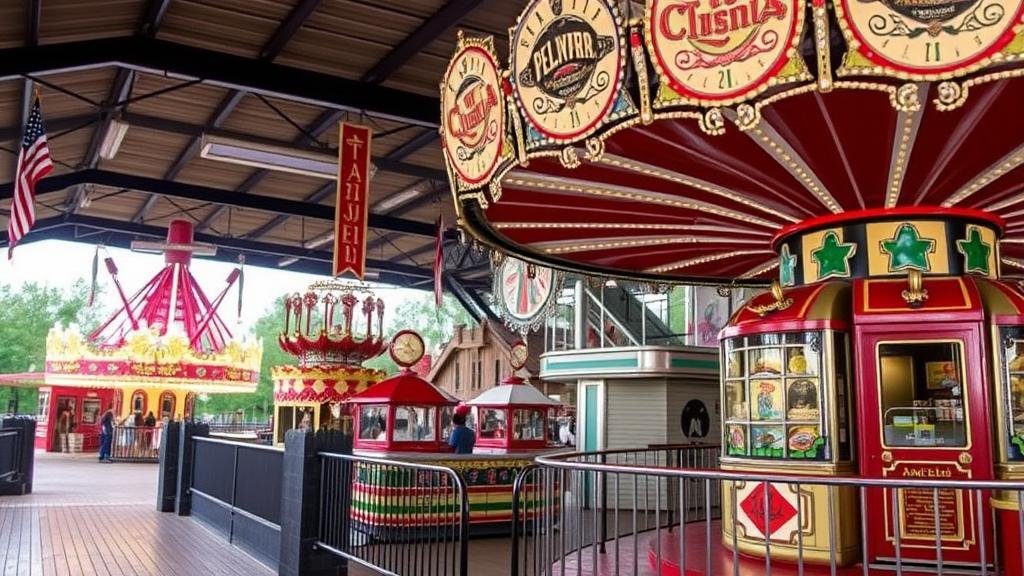Exploring Historic Amusement Parks for Forgotten Coins and Memorabilia
Exploring Historic Amusement Parks for Forgotten Coins and Memorabilia
Amusement parks have long captivated the hearts of generations, serving as both a source of joy and a glimpse into the cultural fabric of their time. As these entertainment hubs evolve, many historic parks have fallen into disuse, leaving behind not just structures and rides but also a treasure trove of forgotten coins and memorabilia. This article delves into the significance of these artifacts, their historical context, and how they offer a unique perspective on the past.
The Historical Significance of Amusement Parks
Amusement parks began to rise in popularity in the late 19th and early 20th centuries, with parks such as Coney Island and palatial resorts like the Great White Way in New York becoming cultural hotspots. e venues were more than just places for leisure; they reflected societal norms, technological advancements, and economic trends of their times.
For example, Coney Island attracted millions of visitors at its peak, showcasing rides that were marvels of engineering. Its attractions, such as the Cyclone roller coaster (built in 1927), not only provided thrills but also highlighted the burgeoning American fascination with speed and technology. This historical context sets the stage for understanding the importance of the coins and memorabilia left behind.
Forgotten Coins: A Window into the Past
Among the myriad treasures hidden in the remnants of historic amusement parks, coins offer tangible connections to daily life. e artifacts can tell us much about the economic conditions and consumer habits of previous generations. The coins found in amusement park grounds are often a mix of accidentally dropped change and tokens specifically minted for park use.
For example, some parks created custom tokens to facilitate transactions. A historic token from the Moonlight Gardens of Cincinnati, which operated in the early 1900s, might reflect prevailing art styles or local events, shedding light on the communitys values at the time. most collectible tokens can unveil stories about their design, distribution, and usage, providing insights into the customer experience.
Types of Memorabilia and Their Collectible Value
The memorabilia associated with historic amusement parks can range from vintage ride tickets and posters to clothing and promotional items. Each piece tells a story of its own. Collectors and historians alike find value in items that may be relatively commonplace but are rich in nostalgia.
- Tickets and Passes: Vintage tickets not only carry aesthetic value but also serve as historical documents reflecting pricing changes and entry methods over time.
- Souvenir Items: Mugs, keychains, and ride-specific memorabilia serve as personal reminders of the experiences people shared at parks.
- Promotional Materials: Flyers and advertisements reveal how parks marketed themselves to different demographics, reflecting societal trends.
For example, a 1950s promotional brochure from Disneyland illustrates the parks growth and its vision of an “imagineered” future. Such materials provide historical context and help collectors appreciate the evolution of entertainment marketing.
The Methodology of Treasure Hunting
The quest for forgotten coins and memorabilia requires a blend of research, permission, and detective work. Here are steps to consider:
- Research: Understanding the history of a park and its key attractions is vital. Histories can unveil likely locations to find artifacts.
- Permission: Always obtain permission from landowners or park authorities before exploring abandoned sites to avoid legal repercussions.
- Tools and Techniques: Use metal detectors, digging tools, and photography equipment to document findings. Each of these tools can aid in uncovering historical remnants securely and ethically.
Real-World Applications and Preservation Efforts
Finding and preserving coins and memorabilia can have real-world implications. Many collectors and enthusiasts engage in these activities to contribute to museum exhibitions or local history projects.
A notable example is the Adventureland Park in Iowa, where historical artifacts have been unearthed and cataloged. Volunteers work alongside historians to create a permanent exhibit showcasing the parks unique heritage and the artifacts representing it, thereby weaving community stories into the broader tapestry of history.
Actionable Takeaways
Exploration of historic amusement parks for forgotten coins and memorabilia can provide a rewarding blend of adventure, education, and connection to history. Here are a few actionable takeaways:
- Start your exploration journey with research to uncover the history of local amusement parks.
- Engage with local historical societies or collector groups to share knowledge and findings.
- Consider documenting your findings and contributing to a community project or museum exhibit to preserve local history.
Through such exploration, the stories of our cultural past can be revived, offering insights into who we are and where we come from.



